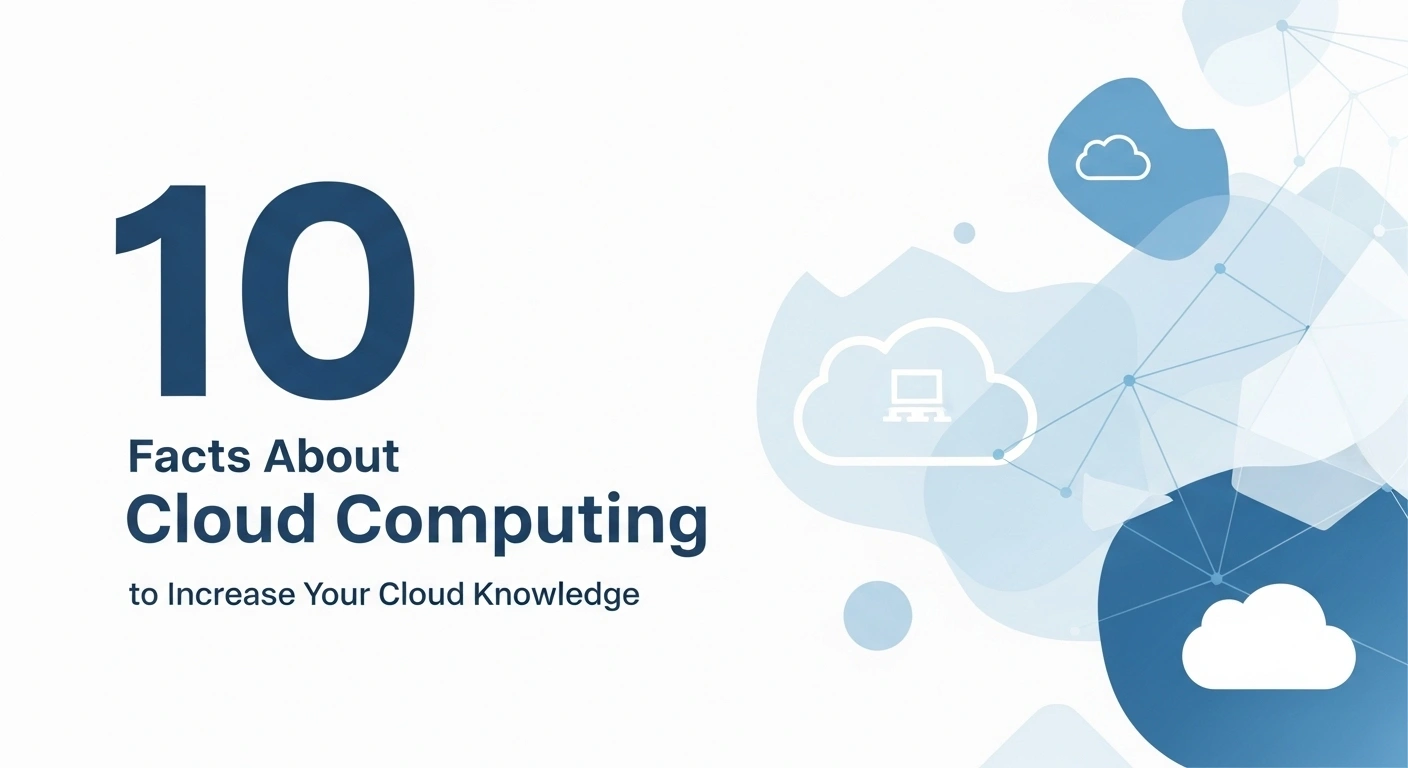- 1. Cloud Storage Reaches 100 Zettabytes by 2025
- 2. Most Companies Use Cloud Services
- 3. Public Cloud Spending Nears $700 Billion in 2025
- 4. Cloud Security Concerns Focus on Misconfiguration
- 5. Cost Optimization Is a Top Cloud Priority
- 6. Multi-Cloud Strategies Are Common
- 7. Cloud Accelerates AI and Machine Learning
- 8. Cloud Lowers Energy Use for Businesses
- 9. Cloud Computing Originated from Early Time-Sharing
- 10. The Cloud Powers Everyday Apps
Cloud computing runs much of the online world. It stores your photos, powers your favorite apps, and runs huge company systems. This article shares 10 important facts about cloud computing. These facts show its huge reach and impact today.
1. Cloud Storage Reaches 100 Zettabytes by 2025
The amount of data stored in the cloud grows fast. By 2025, cloud storage will hit 100 zettabytes. A zettabyte equals one billion terabytes. This shows how much data businesses and people put into the cloud. It is half of the world's total data.
Example: Think of all the photos, videos, emails, and documents stored on Google Drive, iCloud, or Dropbox. All this data contributes to the massive cloud storage numbers.
2. Most Companies Use Cloud Services
Cloud adoption is nearly universal for businesses. A Flexera survey found 94% of enterprises use cloud services. This means almost every big company relies on the cloud for some part of its work.
Example: From a small startup using Google Workspace to a big bank running its systems on Azure, the cloud is a core part of business operations across industries.
3. Public Cloud Spending Nears $700 Billion in 2025
Spending on public cloud services continues its rapid rise. Global spending will reach around $723 billion in 2025. This figure shows the massive investment businesses put into cloud infrastructure and services.
Example: This spending includes paying for virtual servers, storage, databases, and special services like AI tools from providers like AWS, Azure, and Google Cloud.
Post Graduate Program in Cloud Computing by UT Austin
Master AWS, Azure & GCP in 6 months with 200+ projects & GenAI tools. Get career-ready with UT Austin’s Cloud Computing Certificate
4. Cloud Security Concerns Focus on Misconfiguration
While cloud providers build strong security, human error remains a big issue. Misconfiguration of cloud infrastructure accounts for a large share of security challenges. About 68% of security experts point to this as a problem. This highlights the need for careful setup and management.
Example: Leaving a storage bucket open to public access by mistake is a common misconfiguration. This exposes sensitive data, even with the cloud provider's strong security tools.
5. Cost Optimization Is a Top Cloud Priority
Businesses using the cloud want to control spending. Cloud cost optimization is a top priority for 61% of cloud decision-makers. Businesses aim to get the most value for their cloud investment.
Example: Companies use tools to track cloud usage. They buy long-term resource plans to lower costs. They also shut down unused resources. These actions help save money.
6. Multi-Cloud Strategies Are Common
Few companies rely on just one cloud provider. 89% of businesses use a multi-cloud approach. This means they use services from two or more public cloud providers. They do this for flexibility and to avoid being stuck with one vendor.
Example: A company might use AWS for its core applications and Azure for data analytics. This strategy gives them the best features from each provider.
7. Cloud Accelerates AI and Machine Learning
The cloud provides the backbone for cutting-edge technologies. The AI market within cloud computing is projected to reach $97.9 billion by the end of 2025. Cloud platforms make AI and ML tools accessible to many users.
Example: Developers use cloud-based ML services to build smart applications. They train AI models without buying expensive specialized hardware.
8. Cloud Lowers Energy Use for Businesses
Moving to the cloud can help the environment. Companies moving to the cloud reduce their energy use greatly. Cloud data centers work with energy efficiency in mind.
Example: A business shifts from its own data center to the cloud. This move reduces its power consumption by up to 65%. Cloud providers run large, efficient data centers. This helps reduce the carbon footprint.
9. Cloud Computing Originated from Early Time-Sharing
The idea of cloud computing began decades ago. In the 1960s, John McCarthy suggested computing could sell like a utility. Early concepts like time-sharing allowed many users to share one mainframe computer. This laid the groundwork for today's cloud.
Example: IBM's Virtual Machine (VM) operating system in the 1970s let multiple users run applications on a single computer. This was an early step towards resource sharing.
10. The Cloud Powers Everyday Apps
You use cloud computing every day, even if you do not realize it. From streaming movies to social media, the cloud makes these services run.
Example: When you stream a movie on Netflix, the content comes from cloud servers. When you send an email using Gmail, cloud infrastructure handles it. Cloud computing is everywhere.
Cloud computing is a fundamental part of the digital world. It continues to grow and change how businesses and people interact with technology. Understanding these facts helps you see its impact and future.
Also Read:


